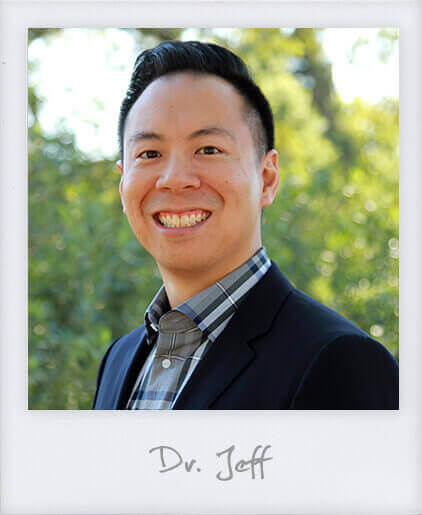
Your child lost a baby tooth and enjoyed a visit from the Tooth Fairy, but, months later, the gap in their smile remains and there’s still no permanent tooth in sight. Exactly how long does it take permanent teeth to come in after losing baby teeth? Well, just as with most things related to kids, it varies and it can be anywhere from a few weeks to over six months, and, in some rare cases, years before the permanent tooth fully erupts.
Many times, a child’s adult teeth are just taking their sweet old time and they’ll make an appearance when they’re ready. That said, as an El Dorado Hills orthodontist, one of the things I look for at a child’s first orthodontic evaluation is missing permanent teeth. This is because, in other cases, there’s an issue that’s preventing the teeth from erupting.
In this post, I’ll be covering the possible reasons a child’s permanent teeth are not coming in and how an orthodontist can help.
Possible Reasons For a Child’s Permanent Teeth Not Coming in
Most commonly:
Premature loss of baby teeth
The American Dental Association has a helpful tooth eruption chart to give you a general overview of when kids’ baby teeth fall out and the age permanent teeth come in. Yes, kids can lose or get teeth slightly earlier or later than the range listed, but a significant deviation from the norm can be a problem.
This is because one of the main functions of baby teeth is saving space for the permanent teeth to erupt properly. When a baby tooth is lost before its natural time, usually because of injury or tooth decay, the underlying permanent tooth won’t be ready to erupt. The surrounding teeth may drift into the gap left behind, which can lead to crowding and block the permanent tooth from coming in correctly. The tooth might erupt at an odd angle, only partially erupt or get stuck under the bone and fail to erupt at all, known as impaction.
To prevent the early loss of a baby tooth, encourage your child to floss once daily and brush their teeth at least twice a day, keep up with their regular dental exams and cleanings, and have them wear a mouthguard when playing sports. If a baby tooth does fall out prematurely, visit your pediatric dentist or orthodontist as soon as you can. Depending on the tooth and how soon the permanent tooth is scheduled to come in, we may use a space maintainer. The appliance holds space until the permanent tooth is ready.
In cases where teeth shifting has already occurred and the permanent tooth is impacted, oral surgery could be needed to guide the eruption or extract the tooth.
Not enough space in the jaw
Permanent teeth are bigger than baby teeth and need more room to erupt. Parents are sometimes concerned when their child has gaps between their baby teeth. But, believe it or not, this is a good thing!
If your child’s teeth, especially the front teeth, are perfectly aligned with no spaces between them around age 6 when they start losing baby teeth, their adult teeth might not have enough space to come in properly. This can cause impacted teeth, severe crowding and other types of malocclusion (bad bite). Sometimes, early interceptive orthodontic treatment, also called phase 1 orthodontic treatment, is needed to guide jaw growth while your child is still growing, ensuring the permanent teeth have space to erupt into their correct places.
The permanent tooth isn’t on the right course
Directional problems are another reason for permanent teeth not erupting. If the permanent tooth beneath a baby tooth is off course and going in the wrong direction, it might not make its debut after the baby tooth falls out. Unfortunately, this can happen even if your child has enough room in the jaw. The problem is most commonly seen with upper canines and lower second bicuspids.
Your dentist or orthodontist may recommend extracting the baby tooth as soon as they diagnose the problem. Many times, this will be all that’s needed to fix the path of eruption. If not, orthodontic treatment can also be used to help redirect the permanent tooth.
Less commonly:
Congenitally Missing Permanent Teeth
Rarely, kids can have congenitally missing permanent teeth. This is when a permanent tooth never develops at all. Since a baby tooth falls out when the underlying permanent tooth pushes against it, without a permanent tooth there, the baby tooth will usually stay in place. If it is lost because of injury, decay or an extraction, there will be no adult tooth to replace it.
When considering short-term future plans to address the missing tooth, your dentist may recommend a Maryland bridge or partial denture to replace the missing tooth in the interim. Long term, a dental implant is the most conservative, comfortable, natural-looking solution. Dental implant surgery can’t be done until your child’s jaw is done growing, so we may perform orthodontic treatment first to shift the rest of the teeth into their ideal places. Then, we can place an appliance to save room for the implant when your child is older.
Primary Failure of Eruption
Primary failure of eruption is another rare cause of missing permanent teeth. With this issue, the permanent teeth have developed but they don’t erupt on their own or only come in partially and then stop. Primary failure of eruption often involves multiple teeth.
This is a complex situation for a few reasons: 1) it can present differently in in the same mouth, 2) it requires a series of X-rays to diagnose over time, and 3) treatment u can’t be done with orthodontics alone; it usually involves a combination of oral surgery, braces, and post-orthodontic prosthodontics. The total treatment time can span decades with breaks in between to allow for growth and development.
While I always try to avoid extractions, there are occasions when the permanent tooth will need to be extracted. When this is the case, I may be able to close the space left behind with InBrace®, braces or Invisalign®. If that’s not possible, orthodontic treatment can shift the other teeth into place and make space for a permanent restoration or dental implant to be placed.
Ankylosis
Ankylosis is a condition where the permanent teeth don’t erupt because they’re fused to the bone. A surgical procedure can sometimes be done to loosen the teeth from the bone. Other times, the tooth is left where it is and cosmetic dental procedures are used to improve its appearance, or it’s extracted and replaced with a prosthesis. Baby teeth can also become fused to the bone, preventing the baby tooth from being lost and the adult tooth from coming in.
Supernumerary Teeth
Some kids have supernumerary teeth, which are extra teeth. Depending on where the extra teeth are located, they can block the permanent teeth from erupting. This is most common with the front teeth.
Usually, extracting the extra teeth will clear the path for the permanent teeth to come in. If the supernumerary teeth already caused eruption or alignment problems, then phase 1 orthodontic treatment could be needed to get your kiddo’s smile back on track and prevent more serious bite problems from occurring down the road.
How Your Orthodontist Can Help if Your Child is Missing Permanent Teeth
There’s a reason why the American Association of Orthodontists (AAO) recommends kids have their first orthodontist visit no later than age 7. This is because it lines up with the age the permanent teeth start coming in.
By age 7, most kids will have their first permanent molars, which erupt into an empty space and aren’t replacing baby teeth. These teeth establish the back of the bite and let me get a good idea of how your kiddo’s smile is shaping up. At 7, they’ve also likely lost some upper and lower baby teeth in the front of the mouth.
When a young patient comes to Jeffrey Kwong Orthodontics in El Dorado Hills, CA for this first visit, a team member takes digital x-rays and photos and I perform an exam. This lets me identify issues, including those below the gumline like extra or missing teeth.
When eruption difficulties are caught early, I can intercept them so they never become a full-blown problem that requires extensive treatment or surgery when your child is older. Using certain appliances, I can make or retain space for the permanent teeth to erupt where we want them.
For an issue like a permanent tooth that’s off course or a supernumerary tooth that’s preventing the front teeth from coming in, extracting the primary tooth or extra tooth as soon as it’s identified is key. This will give your child the best chance of having their permanent teeth erupt naturally without further treatment.
While early intervention will often mean a more straightforward, less invasive treatment, it’s never too late to seek orthodontic care for missing adult teeth. I can create a personalized treatment plan with braces, Invisalign or InBrace hidden braces to help close the gap or to make room for a prosthesis, whether it be a dental implant or fixed bridge.
The Bottom Line
- It can take up to six months, sometimes even a little longer, for a child’s permanent tooth to fully erupt after a baby tooth is lost. So, if you don’t see an adult tooth right away, there’s no reason to panic.
- If, six months after baby teeth fall out, your child’s still missing permanent teeth, schedule a complimentary consultation at Jeffrey Kwong Orthodontics. A referral isn’t necessary. I’ll evaluate their teeth and jaw and let you know if they need any type of treatment. Diagnosing the problem early on often ensures we can still take action to correct it.
- The premature loss of baby teeth, not enough space in the jaw and directional problems are the common reasons why a child’s permanent teeth are not coming in. Rarely, it can be due to congenitally missing permanent teeth, primary failure of eruption, ankylosis and supernumerary teeth.
- Schedule your child’s first orthodontic evaluation no later than age 7 even if they’re permanent teeth seem to be erupting just fine. I can see what’s going on above and below the gumline and recommend phase 1 orthodontic treatment if necessary. Most kids won’t need early treatment and they’ll simply come back for occasional visits over the years, so I can monitor their growth and development and pinpoint the best time for them to start orthodontic treatment.
Schedule a Visit With a Kids’ Orthodontist in El Dorado Hills, CA
As a certified specialist in orthodontics, I treat patients of all ages, including kids. While I do treat children conservatively and only recommend early intervention when there’s a clear health benefit, sometimes, the permanent teeth need a bit of help erupting.
At Jeffrey Kwong Orthodontics, my team and I make visits fun and exciting for kids and their parents. At our bright, friendly office, you’ll find music playing, contests and giveaways and all sorts of perks to ensure you actually like coming in for appointments. Schedule a free exam for your child today!

